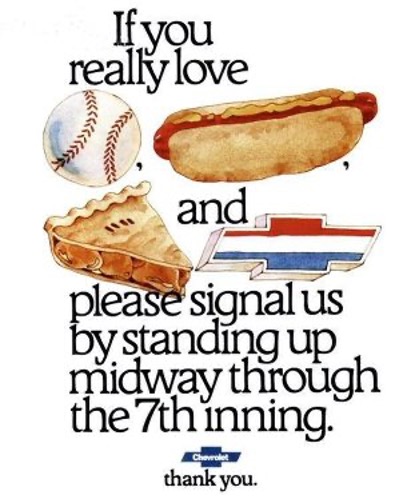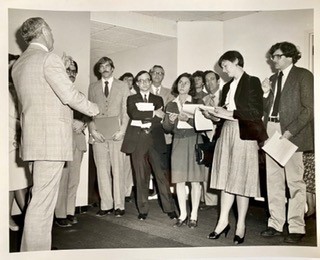Next City is a non-profit national news organization focusing on greater economic, environmental, and social justice in cities.
Its economic correspondent is Oscar Abello who has written several stories on credit union chartering efforts. The excerpts below are from his description of a new mutual bank which opened in October 2022 and today has $44 million in assets.
This de novo start up is a fascinating story. It also is a contrast with a very similar credit union effort, Maine Harvest FCU. The credit union closed after two plus years of operation to become a new department within Five County Credit Union, in Bath, ME.
Here is Oscar’s introduction to his story about this new mutual:
“Banking was social long before it was anything else. Five thousand years ago, on the plains of ancient Mesopotamia, farmers, merchants and artisans conducted business with each other based on credit, with others they trusted as committed members of a community. The earliest writings found are clay tablets on which people essentially kept each others’ tabs. It was something early human beings did as part of surviving as a civilization, or even as a species.
“For all the problems and shortcomings of the U.S. banking system, perhaps the one redeeming quality it ever had was how much it relied (until recently) on local relationships built on trust.
“Fast forward to today. Many things have changed, but can banking still be part of how we address challenges together as a society? Today’s story offers an example that points to yes. Is the banking system supposed to have a social mission in addition to purely financial goals?”
How To Build A Bank To Scale Up Local Food Ecosystems
I was intrigued by Abello’s brief history of the mutual charter and its demise. An additional takeaway is why it was believed preferable to a credit union for the founders.
It is also the story of Charley Cummings and his wife, who had a vision of creating a new, sustainable, local food system.
They had found a financing gap in the market and thought a mutual was the best solution. Excerpts follow.
“That gap in the market for small- and mid-scale producers and also other value chain participants wasn’t well addressed by farm credit either, like manufacturers, distributors, consumer brands, trade brands,” Cummings says.
To fill in that niche, Cummings landed on a very old solution: a mutual bank. It’s a bank that doesn’t have conventional shareholders. Instead it’s owned and controlled by its depositors, similar to a credit union.
It already has more than a thousand depositors and $44 million in assets, including loans to farmers, organic food production facilities and even a project to build a solar array over a sheep grazing meadow to add some income for the farmer.
“The reason we’re structured as a mutual is because it’s intended to be permanent,” Cummings says. “The mutual bank model has proven its longevity and the structure gives the impact mission of the (mutual) bank teeth from a governance perspective in a way that shareholder ownership does not.”
A Brief History of Mutuals (excerpt)
Mutual banks emerged as a way for working class or poorer households — often recent immigrants — to pool their savings, earning a modest amount of interest while investing in each others’ homes. They clustered in the northeast because during the 19th and early 20th century it was the country’s most populated region, with new immigrants coming over from Europe in waves. . .
The Federal Deposit Insurance Corporation today lists 427 mutual banks across 43 states, though they’re still largely concentrated geographically in the northeast, Ohio or Illinois. Without the pressure to grow and generate profits for shareholders, mutual banks are mostly smaller institutions focusing on a specific geographic market.
Why Not a Credit Union?
Cummings did look into starting a credit union, which is a much more common example of a cooperatively-owned and -governed financial institution, but there are a few reasons why it wasn’t quite a fit. Regulators generally don’t allow new credit unions to do commercial lending in their first two or three years. Beyond that, current laws limit credit union business lending to 25% of their loan portfolios unless a majority of their members come from low-income census tracts. These restrictions just didn’t make sense for a new financial institution whose core business was going to be agriculture and food businesses.
For many decades, banking regulators and policymakers got caught up in an ideological backlash against the mutual bank model, fueled by the idea that all companies including banks were better off putting profits for shareholders above all else.
It took more than the usual amount of convincing just to give Walden Mutual the chance to find startup investors who would be willing to limit their own returns so the bank could retain enough earning.
The Funding Source for the Mutual
It turns out having a clear social mission protected by a mutual structure was a big draw for the growing segment of ESG investors — the acronym is short for “environmental, social and governance.” Walden Mutual was able to, in essence, borrow nearly $25 million for startup capital from investors who know they cannot profit later from selling an ownership stake in the bank.
With an FDIC-insured bank, he says, you have an entity with a lower cost of capital than the government itself. “Our theory of change is that by lowering the cost of capital for these types of farms and businesses, we can really help the ecosystem to grow.”
“There’s nothing more strategically aligned in financial services than saying to a potential depositor, ‘hey, there’s nobody else here, we work for you and in your best interests,’” Cummings says. “Whereas with a shareholder-owned bank, that is not always the case.”
There is much more in the full story which you can read here.


